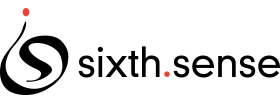
Cynicism or Scepticism? Knowing the Difference Matters …
We have all met them – the cynics in the room. The ones who roll their eyes at the latest initiative, scoff at talk of culture change, or instantly dismiss novel ideas as “more of the same.”
At times, you may have been that person. I know, I have; usually when I’m stressed or exhausted!
But here is the thing: while scepticism is a vital tool for any leader or professional, cynicism can be a warning sign. It can show something deeper – even burnout.
So, what’s the difference?
Cynicism: The Shadow of Burnout
Cynicism is the voice that says, “Nothing will ever change,” or “People always let me down.” It’s more than a passing frustration – it’s habitual negativity, often driven by emotional exhaustion, or even depression.
In fact, some psychologists recognise cynicism as one of the hallmark symptoms of burnout, alongside exhaustion and reduced professional efficacy. Cynicism becomes a defensive shield – a way to protect yourself from disappointment when you’re drained, disillusioned, or feeling powerless.
Left unchecked, cynicism drains your energy, poisons relationships, and blunts your creativity. Worse still is cynicism’s impact on creativity and psychological safety; it is highly contagious; stifling innovation and erodes trust.
Scepticism: The Foundation of Critical Thinking
Scepticism, on the other hand, is not about dismissing ideas – it’s about testing them. It asks questions like:
- “What’s the evidence for this?”
- “What assumptions are we making here?”
- “What are the unintended consequences?”
Scepticism keeps us honest. It guards against groupthink and helps ensure that decisions are grounded and evidence-based, not the outcomes of wishful thinking.
Crucially, scepticism operates from a place of curiosity, not defeat. It assumes that something could work – but that it needs to be critically appraised first.
In leadership, healthy scepticism is essential. But it requires psychological energy – the kind that burnout saps away.
Spotting the Signs: Are You Becoming Cynical?
- Here are a few tell-tale signs that scepticism might be sliding into cynicism:
- You find yourself dismissing everything before giving it fair hearing.
- Your inner dialogue is defeatist and sounds like: “Why bother?” or “This won’t work anyway.”
- You feel emotionally detached – more likely to withdraw or mock than engage.
- You assume bad intentions behind others’ actions.
If these resonate, it’s worth asking: Am I burning out?
What To Do About Cynicism
- Name it – simply recognising that cynicism could be a sign of burnout is a powerful first step. It reframes the negativity as a signal, not a fixed trait.
- Reconnect with your purpose – burnout often thrives when we lose sight of why we do what we do. Take time to reconnect with the aspects of your work that matter most to you and if you can no longer find any, consider doing something different!
- Rest and recharge – emotional exhaustion fuels cynicism. Make space for recovery – not just physically, but mentally and emotionally too.
- Cultivate healthy scepticism – challenge ideas – but from a place of curiosity, not contempt. Ask why? and how?, rather than why bother?
- Check the system – burnout isn’t just about the individual – it’s often about the environment. If cynicism is widespread in your organisation, it may point to deeper cultural or systemic issues.
In the end, a healthy sceptic builds better futures. A cynic only sees the worst in them.
If you’re noticing signs of cynicism in yourself or your teams, perhaps it’s time to have a deeper conversation. At Sixth Sense, we help leaders reconnect with purpose, resilience, and fresh thinking. Let’s talk.
#burnout #leadership #resilience #criticalthinking #mentalhealth

Start The Discussion